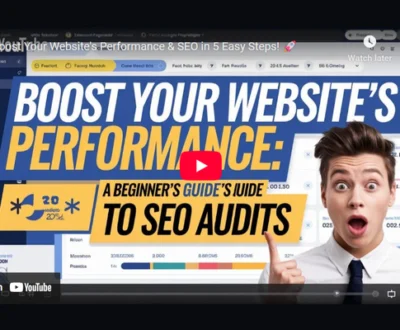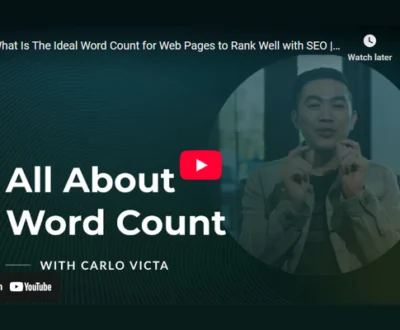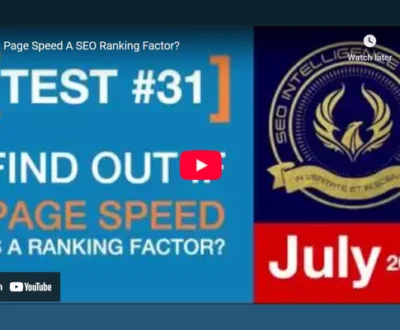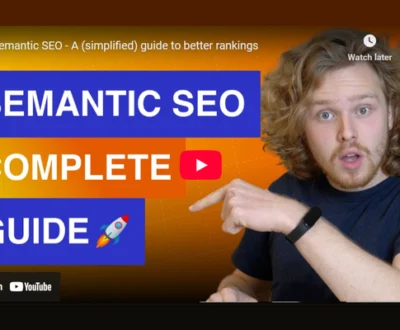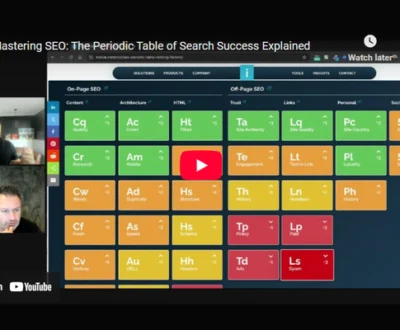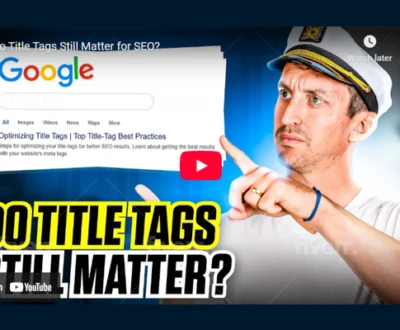I focus on choosing keywords that match user intent and have strong traffic potential but manageable competition. I then integrate them naturally into SEO headings, ensuring clear hierarchy with H1 to H3 tags, which helps both search engines and readers. Organizing content around these keywords guides users effectively while boosting relevance. Tracking metrics like click-through rates and rankings helps me adjust strategies over time. Staying aware of technical and user experience factors keeps content optimized. You’ll find more strategies to refine your SEO approach ahead.
- Key Takeaways
- Identifying and Prioritizing Effective Keywords for SEO
- Optimizing SEO Headings for Maximum Search Visibility
- Structuring Content to Align With User Search Intent
- Leveraging Competitor Insights for Heading Strategy
- Monitoring and Measuring Heading Performance Metrics
- Implementing Technical Best Practices for SEO Headings
- Frequently Asked Questions
- How Often Should I Update My Keywords in SEO Headings?
- Can Keyword Stuffing in Headings Ever Benefit SEO?
- What Tools Help Automate Heading Optimization for Large Websites?
- How Do SEO Headings Impact Voice Search Rankings Specifically?
- Are There Industries Where Keyword-Focused Headings Perform Poorly?
- Final Thoughts
Key Takeaways
- Select keywords balancing search volume, relevance, and ranking difficulty using tools like Google Keyword Planner and Moz Explorer.
- Integrate keywords naturally in H1, H2, and H3 headings aligned with user intent and content structure.
- Use semantic HTML heading tags properly to maintain hierarchy and improve accessibility for SEO and user experience.
- Regularly monitor heading performance via CTR and ranking data with Google Search Console and adjust based on fluctuation reports.
- Optimize headings to guide users clearly through content while matching different funnel stages and addressing specific queries.
Identifying and Prioritizing Effective Keywords for SEO
How do you choose the right keywords to boost your website’s SEO? I start by using keyword tools like Google Keyword Planner and Moz Keyword Explorer to gather essential search metrics, such as search volume and competition levels.
These tools help me focus on terms that balance traffic potential with achievable ranking. I pay close attention to relevance, ensuring the keywords match the intent of my content—whether informational, transactional, or navigational. Understanding the search intent behind keywords is essential for creating content that truly meets user needs.
I also consider domain authority, avoiding keywords that are too competitive for my site’s strength. To refine my choices further, I analyze long-tail keywords and low-competition phrases that often deliver better results.
Data-driven validation is key; I verify metrics with tools like Ahrefs and Google Trends to avoid seasonal spikes or overly difficult terms.
Finally, I group related keywords by intent and score them based on relevance, volume, and competition, which helps me prioritize the most effective keywords for my SEO strategy.
Optimizing SEO Headings for Maximum Search Visibility
After selecting the right keywords, the next step is to integrate them effectively into your website’s headings. Maintaining a clear header hierarchy is essential; use a single H1 tag for the main title, followed by H2 and H3 tags for subtopics. This helps search engines understand the page structure and improves keyword relevance. Avoid stuffing keywords; instead, place them naturally within headings to enhance readability and SEO. Proper header tagging also enhances accessibility for users with disabilities, ensuring everyone can navigate your content.
Here’s a simple example of optimizing headings:
| Header Level | Keyword Integration |
|---|---|
| H1 | Primary keyword |
| H2 | Secondary keyword |
| H3 | Long-tail keyword |
| H4 | Related topic keyword |
| H5 | Supporting keyword phrase |
Each heading should clearly describe the content it introduces, aligning with keyword relevance. This approach not only boosts search visibility but also improves user experience by organizing content logically and making it easier to navigate.
Structuring Content to Align With User Search Intent
When structuring content, I focus on placing keywords that match the user’s intent to improve relevance and ranking.
I also map content to different funnel stages to guide users effectively through their journey.
Using question-based headings helps address specific queries, making the content more user-friendly and targeted.
Intent-Focused Keyword Placement
Effective intent-focused keyword placement starts with embedding keywords strategically in headings and subheadings, which directly signal the content’s purpose to both users and search engines.
Through careful intent analysis, I identify whether the user’s goal is informational, commercial, transactional, or navigational and choose keywords that reflect this intent clearly.
Maintaining appropriate keyword density guarantees the content remains natural and readable while reinforcing relevance. Including long-tail keywords that match specific user questions helps capture nuanced search intent.
I avoid mixing conflicting keywords within the same section to keep the content focused and aligned.
Funnel Stage Content Mapping
Mapping content to the right funnel stage is essential for aligning your SEO strategy with user search intent. Funnel optimization depends on correctly matching content to awareness, consideration, or decision stages, ensuring content alignment with what users are searching for at each point.
For example, top-of-funnel content targets broad informational needs, while middle and bottom stages focus on evaluation and conversion.
To structure your content effectively, consider these steps:
- Define buyer personas and customer journeys to tailor content precisely.
- Match content types to funnel stages, like blog posts for awareness and case studies for consideration.
- Use analytics to monitor content performance and adjust your strategy accordingly.
Question-Based Heading Usage
Why should you use question-based headings in your content? These headings align directly with how people naturally ask questions, boosting search visibility and matching user intent.
By applying question phrasing strategies, you can target long-tail queries that often trigger featured snippets, such as People Also Ask sections. This approach not only improves click-through rates but also enhances voice search optimization, as virtual assistants rely on conversational queries.
I recommend front-loading questions in your H2 and H3 tags and incorporating FAQs to cluster related queries. Remember to update older posts by adding relevant question headings and use schema markup to improve SERP presentation.
Avoid keyword stuffing and always consider the search intent behind questions, ensuring your content delivers thorough, clear answers that keep readers engaged and reduce bounce rates.
Leveraging Competitor Insights for Heading Strategy
Many successful SEO strategies start with a careful analysis of competitors’ heading approaches, as understanding how they use keywords and structure their headings can reveal valuable opportunities.
By conducting competitor headline analysis, I identify keyword usage trends that attract targeted traffic. This helps me spot gaps where my headings can improve or include missing keywords. Using SEO tools like SEMrush makes this process efficient and precise.
When leveraging competitor insights, I focus on three key areas:
- Identifying high-traffic keywords competitors use in their headings to boost relevance.
- Comparing heading structures to optimize the format and improve readability.
- Integrating unique elements to make my headings stand out while maintaining brand consistency.
This approach allows me to create headings that aren’t only optimized for search engines but also engaging for readers, ultimately improving my content’s visibility and relevance in search results.
Monitoring and Measuring Heading Performance Metrics
I keep a close eye on the click-through rate (CTR) of my headings because it shows how well they attract searchers’ attention.
Monitoring ranking fluctuations for targeted keywords also helps me spot when a heading might need improvement.
Tracking Heading CTR
How can you accurately measure the effectiveness of your SEO headings? It starts with CTR analysis, which helps determine how often users click on your headings in search results.
To track this, I use tools like Google Search Console for direct CTR data and web analytics platforms to segment organic traffic. Testing heading variations through A/B experiments also reveals which versions perform best.
Here are three key methods I recommend:
- Use Google Search Console’s “Performance” tab to monitor clicks and impressions by heading.
- Analyze heading CTR changes with web analytics tools like Google Analytics.
- Conduct A/B testing on landing pages to compare CTR among heading variations.
Tracking these metrics allows you to optimize headings, increasing clicks and improving overall SEO success.
Ranking Fluctuation Alerts
Although ranking fluctuations can sometimes appear sudden or confusing, setting up alerts to monitor these changes in your headings is essential for maintaining SEO effectiveness.
I rely on ranking alerts to receive real-time updates whenever a significant shift occurs in keyword positions linked to my headings. This proactive fluctuation reporting helps me quickly identify if changes result from algorithm updates, content edits, or competitor actions.
Using rank tracking tools, I analyze these alerts alongside metrics like position changes and visibility share to understand the impact on my content’s performance.
Regularly reviewing fluctuation reports also allows me to adjust heading keywords and content strategies promptly, minimizing traffic loss and sustaining stable search rankings over time.
Effective monitoring is key to managing SEO heading performance successfully.
Implementing Technical Best Practices for SEO Headings
When implementing technical best practices for SEO headings, it’s vital to use semantic HTML tags correctly rather than relying solely on styling with CSS classes or inline styles.
Proper use of heading tags (H1-H6) preserves the semantic hierarchy that search engines depend on to understand page structure. Avoiding heading errors like multiple H1 tags or skipped levels improves crawlability and user experience.
Here are key practices I follow:
- Use a single H1 tag to represent the main topic and apply H2 and H3 tags for subsections without skipping levels.
- Guarantee headings accurately describe the content below, maintaining semantic relevance and trust.
- Code headings accessibly to support screen readers and maintain consistent formatting across the site.
Frequently Asked Questions
How Often Should I Update My Keywords in SEO Headings?
I update my SEO keywords regularly, matching keyword trends to stay relevant. Depending on my industry and competition, I adjust updating frequency—usually monthly or quarterly—to keep content fresh and maintain strong search rankings.
Can Keyword Stuffing in Headings Ever Benefit SEO?
I don’t think keyword stuffing in headings ever benefits SEO because excessive keyword density confuses search intent and harms user experience. Instead, using keywords naturally helps search engines understand content without risking penalties or lower rankings.
What Tools Help Automate Heading Optimization for Large Websites?
I rely on heading analysis and optimization tools like Scalenut and Surfer SEO to automate heading optimization for large websites. They streamline keyword clustering and content planning, saving time while boosting SEO effectiveness across many pages.
How Do SEO Headings Impact Voice Search Rankings Specifically?
I’ve found voice search optimization relies heavily on clear heading structure. Well-organized headings help voice assistants quickly find relevant info, boosting your rankings. So, focusing on heading clarity really improves your chances in voice search results.
Are There Industries Where Keyword-Focused Headings Perform Poorly?
Yes, I’ve noticed industries like insurance and manufacturing often struggle with keyword-focused headings because keyword relevance can be tricky, and content quality may suffer if headings feel forced or too generic, harming engagement and rankings.
Final Thoughts
Have you ever wondered why some websites rank higher despite similar content? The strategic use of keywords in SEO headings and content makes all the difference. By identifying the right keywords, optimizing headings, and aligning content with user intent, you improve visibility and relevance. Don’t forget to analyze competitors and monitor performance to refine your approach. Implementing these practical steps guarantees your SEO efforts deliver measurable results and keep your content competitive in search rankings.
Windee Tan is a seasoned SEO Specialist with over a decade of experience helping businesses grow their organic visibility through data-driven strategies. He specializes in technical SEO, content optimization, and local search, with deep knowledge of tools like GA4, GSC, SEMrush, and Screaming Frog. Windee is passionate about translating complex SEO insights into practical tactics that drive real-world results. When he's not auditing sites or crafting keyword strategies, he’s exploring the latest trends in AI, digital marketing, and productivity.
About this blog
We are a digital marketing company with a focus on helping our customers achieve great results across several key areas.
Request a free quote
We offer professional SEO services that help websites increase their organic search score drastically in order to compete for the highest rankings even when it comes to highly competitive keywords.
Subscribe to our newsletter!
More from our blog
See all postsRecent Posts
- Writing Clear Calls to Action That Boost On-Page SEO 21 August 2025
- Why Word Count Still Matters in On-Page SEO Today 20 August 2025
- Why Site Speed Is Critical for On-Page SEO Success 19 August 2025


